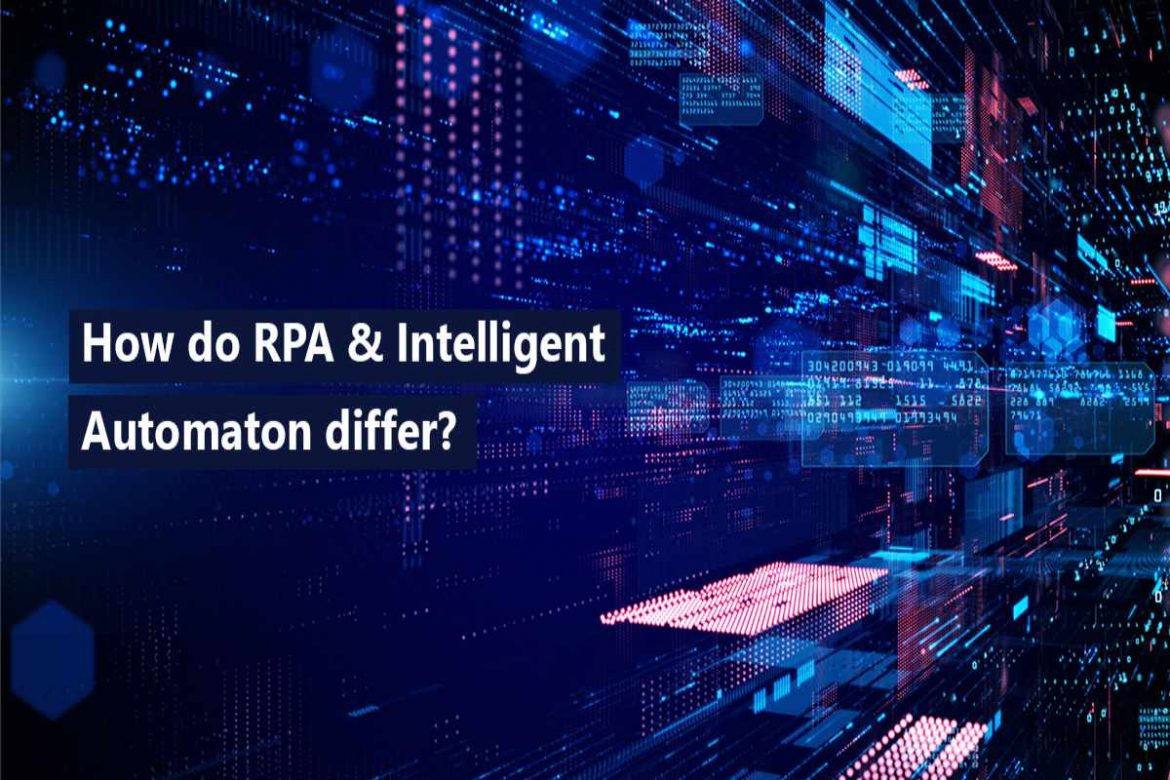Table of Contents
Introduction
How do RPA & Intelligent Automaton Differ? – Robotic Process Automation (RPA) & Intelligent Automation (IA) both fall under the category of automation. However, how do they diverge from each other? This brief post explores the similarities & differences between the two and their respective strengths as well as weaknesses. So, what are we waiting for? Let us dive straight into it and see what RPA automation has up against Intelligent Automation?
Features of RPA
Robotic Process Automation Software:
– Intuitive discovery of processes via Machine Learning (ML), along with Natural Language Processing (NLP) for added power to deep learn, integrate & manage data processing
– Ultimate automatability with AI (Artificial Intelligence) to drive even the most complex of data processes & still eradicate manual repetitive tasks, saving time & work resources
– Secure encryption technology to ensure that data remains protected during processing
– Simplified bot creation interface, creating an ergonomic user experience for anyone
– Source control autosaves each respective version, without risking deletion or being purged
– Various hosting & deployment options make this a versatile multi-platform tool
– Rules based exception handling, proactively identifying, initiating & handling data point triggers
– Debugging & scriptless automatability to develop or adjust using minimal (low) or no code
– Seamless integration with other apps or APIs for ultimate 3rd party flexibility
– Optical Character Recognition (OCR) capability for Intelligent Document Processing
– Actionable Intelligence based on cognitive learning for autonomous system handling
Features of Intelligent Automation
– Natural Language Processing for deep diving into (un)structured text analysis, making this a powerful document processing tool
– Speech recognition capability to integrate human interfaces with bots for ideal understanding
– Computer Vision to be able to interpret imagery or visual properties: especially useful for graphic heavy files
– Machine Learning: intuitive cognitive understanding, like RPA
Comparison
Now, although RPA has more features than Intelligent Automation, let us not overlook the fact that both technologies are often integrated together. Yes – RPA has more ‘strengths’ per se than Intelligent Automation, however the latter forms the basis of the former’s many features too. For instance, ML is common in both, as are elements of NLP. Furthermore, they both operate using AI. Nevertheless, RPA has a slight edge over Intelligent Automation, as it provides the backbone for additional digital technological layers to be added on. It can also operate independently.
The wonders of Edge Verve’s AssistEdge
Combining the finest elements of RPA, AssistEdge can be integrated into Intelligent Document Processing (IDP), scalable Intelligent Automation & enterprise grade end-to-end automation. Furthermore, their flexible deployment models & secure infrastructure enable complex document processing. Moreover, auto automation, API first architecture, process orchestration & smart process discovery collectively unify all RPA aspects into a single entity. This reduces resource consumption, drives informed decision making & integrates easily within a brand’s blueprint. Be amazed with their no code protocol & intuitive machine learning (ML) for ultimate convenience & satisfaction.
Moreover, customer service, satisfaction & upgradability are all facets that make AssistEdge a potent tool for a variety of industries. Being one of the leading RPA service providers (if not the best RPA provider), AssistEdge’s versatility & intuitiveness makes it adaptable to even the most complex of processing environments.
RPA – Strength and weaknesses
Well, RPA & Intelligent Automation both have their respective share of strengths. In terms of weaknesses, it is more to do with what they do not have, rather than any actual flaw. Whatever shortcomings that they do have in terms of lacking something is fulfilled by the other’s respective features. Hence, they complement each other, ensuring that any document, process, or management system can be truly intelligently automated for the betterment of the workforce. Be it healthcare, finance, retail, hospitality, or manufacturing – all these domains do require some sort of automation. Their need is only set to grow further into the future. Hence, we must fulfil this requirement with apt solutions, such as RPA & Intelligent Automation.
Finally, both technologies depend on AI, ML, NLP, Computer Vision & automation. This means that inevitably, both will always share commonality and work synergistically to ensure that any project is served in an accountable manner. Their efficiency by working in tandem with one another sets a powerful precedent for future digitization in our evolving work environment.
Conclusion
With Web3 just round the corner and many other wonderful things to come, it is no wonder that these two tools are much sought after. Lastly – just remember this. Our world has come a long way from manual clerical tasks to semi-automated and now fully automated processes. The only factor hindering any further progress is our limitations in mindset. If the world truly is your oyster, then quite simply, add further algorithmic logic to such tools to perform even more automation on tasks which you never considered to be automatable. Then observe & admire how brilliant these can all be!


